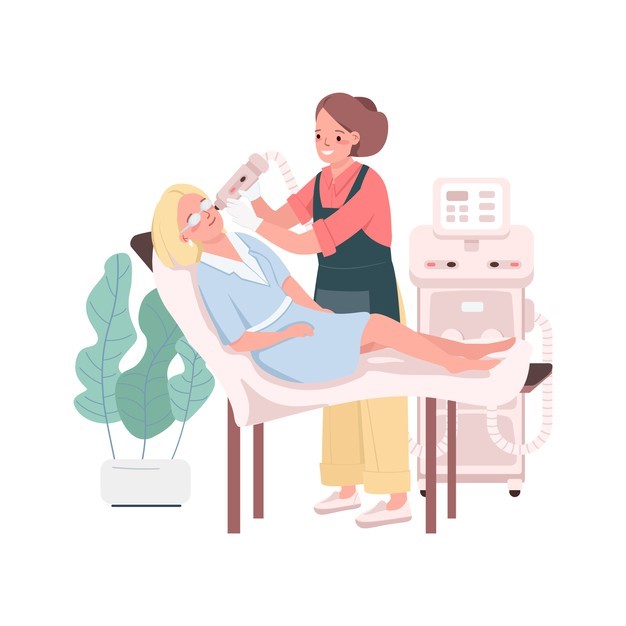Light therapy has become very popular recently. In this article, we will take a look at NIR Light therapy.
Light therapy that uses low-level laser therapy (LLLT), which also goes by the name photobiomodulation, is a type of treatment that uses a low-level laser or light-emitting diodes to repair and improve tissue and reduce pain and inflammation. You can go to Celluma, a professional provider of LED light therapy if you want to know more about this.
If you’re already familiar about the different types of red light therapy devices, near-infrared (NIR) light therapy is actually very similar to it. The major difference is the fact that the eyes cannot see infrared energy, it is invisible, and because of its very properties, it can penetrate the body to a much deeper level than red light. This makes the light be able to reach deep into soft tissues, joints, even bones and muscles.
Studies have shown that NIR wavelengths of light can penetrate much deeper than other types of light wavelengths through the skin and bones. It is important to mention here that skin depth does vary around the body and that the transmission of the light can be very much affected by the pigmentation levels of the skin.
This type of light, NIR light, has been put to use in light therapeutic devices, and it has been able to assist in addressing a wide range of injuries. This type of light able to penetrate deeper than UV or other types of visible light and the other amazing thing is that it has no side effects as well.
When this type of light used, there is a negligible amount of heat that is produced and is not at all concerning for anyone using this therapy method. LED is also a type of light that is very well tolerated by the biological tissues, and there have no known adverse effects as well. For therapeutic purposes, LED has gotten a low-risk general wellness status from the FDA.
Also Read: How to Set-Up An Ad Hoc Wireless Network? – Features and Uses

What is Light Therapy
Light therapy is a type of therapy where the light of certain specific wavelengths uses to bring about changes in our physiology. In almost all cases, the effects of light therapy cannot mediate through eyesight, but rather it works by directly affecting the targeted cells.
This type of therapy has been studied and examined for over 100 years by now. Nowadays, different light spectrums prescribed for various medical conditions. The examples of this type of therapy include:
- The exposure to UV light to get more vitamin D into the body as well as control autoimmune and skin conditions that are allergic, such as vitiligo, psoriasis etc
- The use of white, blue or blue-green light to cure and manage jaundice in newborns.
- The use of bright blue or white light therapy to combat seasonal affective disorders, irregularities of the circadian rhythm etc
- Photomodulation by using red light or near-infrared wavelengths to give more energy to the mitochondria. This will have anti-ageing effects and help heal wounds as well as better manage inflammation.
The sight of colours has also been related to symptoms and as having health benefits. It is especially true in the case of traditional medicine such as Ayurveda. In recent times, scientists have looked into how colours have an effect on us and are also looking into the medicinal use of colour therapy.
Also Read: What is Backtick? Definition, Advantages, and Powerful Commands
What is NIR Light Therapy?
NIR light therapy, on the other hand, is a type of light therapy which includes getting expose to certain specific types of NIR light that has beneficial effects on health. The spectrum of infrared light consists of wavelengths that are invisible to the naked eye, and its frequencies are lower than that of red light.
This is the reason why we feel a certain radiant type of heat when we expose to the sun for a while as the infrared light from the sun is responsible for creating heat in the tissues of the body. The infrared light spectrum is such that it also affects our physiology in different ways as well.
The spectrum of infrared light falls between 700 nm to 0.1 mm in wavelength. This is in turn divided into four types, namely near, mid and far-infrared range. The wavelength of the longer variety has lower frequencies. The three kinds of NIR listed below
- Near-infrared light- This type of NIR has wavelengths of between 700 to 1400 nm. It generates the most amount of heat among the three varieties, but it cannot penetrate too deeply into the tissues of the body. The infrared light with wavelengths between 760-865 nm range can start mitochondria function in the body. The benefits of this are that it can increase metabolism and tissue repair and reduce inflammation as well.
- Mid-infrared Light: This type of light has wavelengths between 1400 to 3000 nm. It also can penetrate much deeper than near-infrared light and is also able to produce more heat in the body. The therapy types that use this type of light can help with the expansion of vessels of the blood and also increase the circulation of blood so that it can reach the injured or inflamed parts of the body.
- Far- infrared light: This type of light has wavelengths ranging from 3000nm to about 0.1 mm. This type of light can penetrate the deepest into the tissues of the body. Its health benefits are a result of its ability to produce heat in the body and also some other properties as well. Therapy that uses this type of light can help with inflammation and also help us relieve oxidative stress. This type of light, when used for therapeutic purposes, has the potential to increase circulation of the blood, improve the functioning of blood vessels and the heart, it can also reduce pain and fatigue and help us normalize blood pressure.
Shashi Teja
Related posts
Hot Topics
What is Kafka Used For: A Complete Guide
What is Kafka used for? If you’ve been diving into the world of distributed systems, microservices, or data streaming, you’ve…
How Do Password Managers Work? The Guide That Finally Makes Sense
Ever wonder how do password managers work and whether they’re actually safe? I get it. The idea of putting all…



